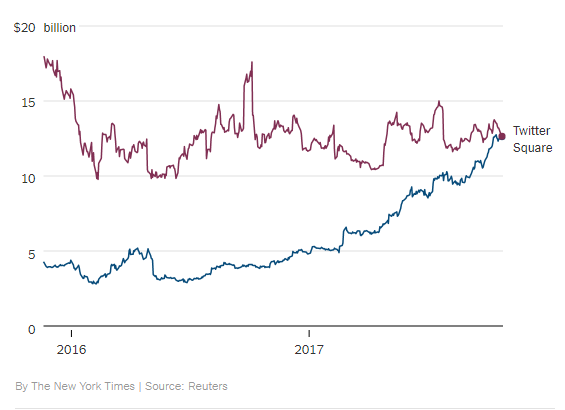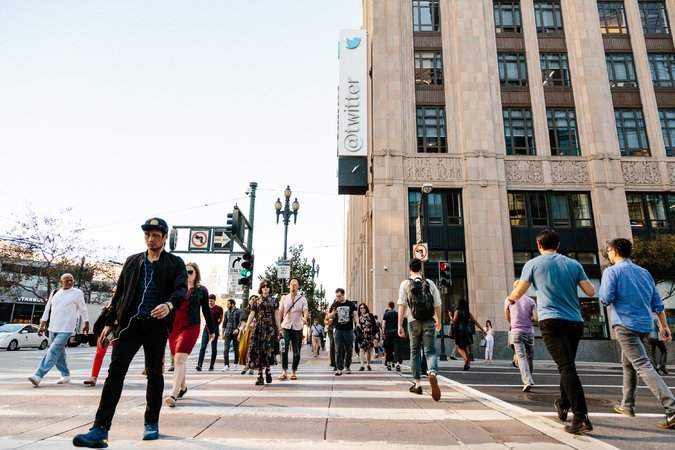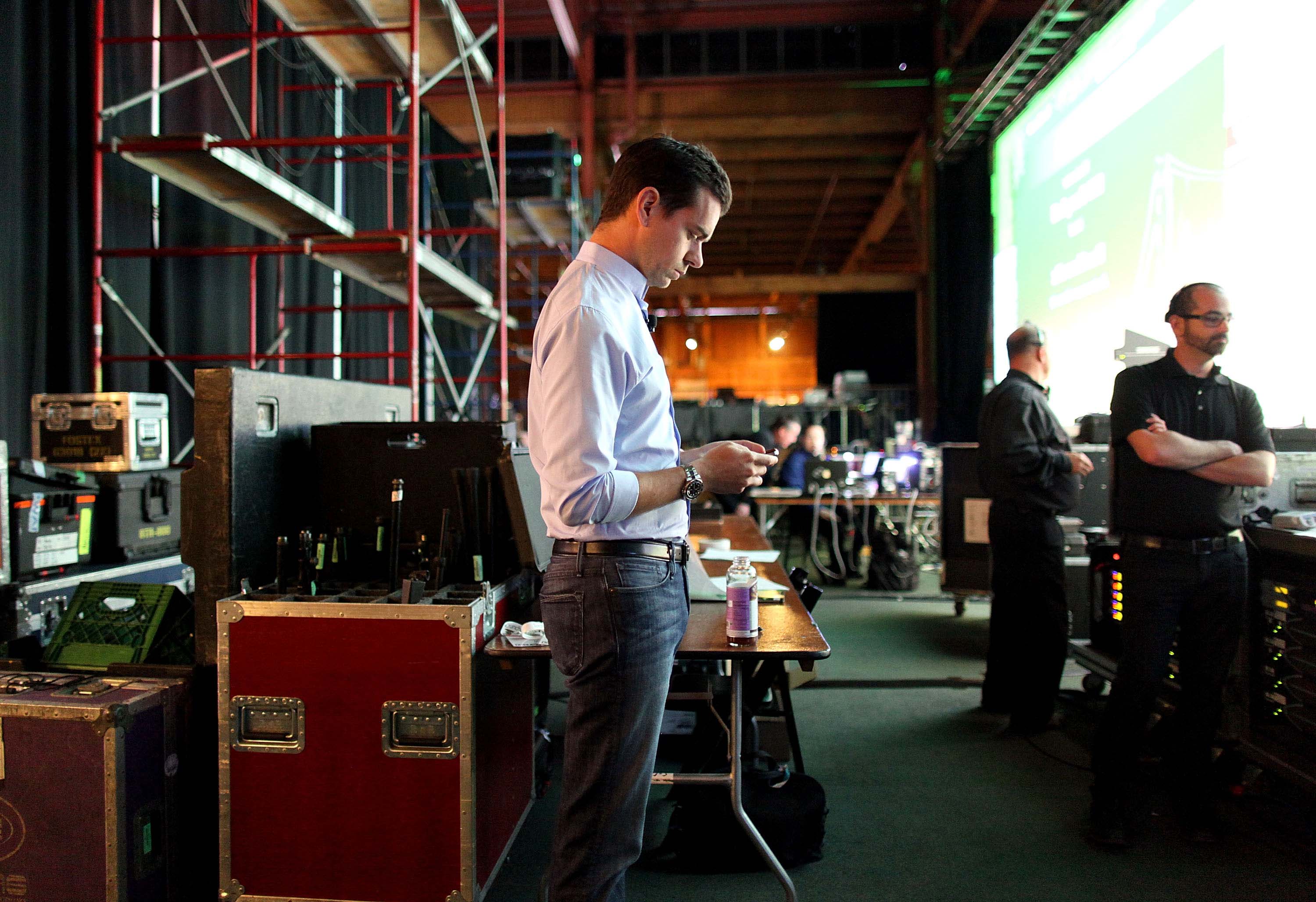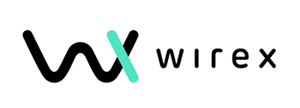Square, the second company of the head of Twitter, can outrun the cost of the first
Let Twitter and called the favorite platform of Donald Trump, but Square, the payment company, which is also led by Jack Dorsey, has recently achieved much greater success.

Jack Dorsey has become a widely known figure in all of Silicon Valley due to his activities as head and co-founder of Twitter, a platform that many call the favorite mouthpiece of Donald Trump.
Discussing Dorsey, many belatedly recall that he, incidentally, has another startup that he helped found and which he also manages today. We are talking about the payment company Square, whose headquarters is within walking distance of the Twitter office in the same San Francisco.
And perhaps very soon the cost of this less attractive second company, in which, as a rule, spends the second half of the day, is very likely to exceed the value of his much more well-known first company, where he works in the morning.
Thanks to the steadily growing price of Square shares, the total value of those that are in circulation is very fast approaching the cost of Twitter, whose quotations have fluctuated around the same mark for several months in a row. On Wednesday, Square cost $ 12.62 billion - only 3 million less than Twitter. And this is taking into account the fact that some year ago Square did not even cost half of this amount.
Square is catching up with Twitter at a price whose shares have frozen at the same price level. On Wednesday, October 25, the difference in market capitalization of companies amounted to only a few million dollars.
Daily change in market capitalization (as of October 25, 2017):

Source: The New York Times / Reuters
If the current trend continues, the lines on the chart may be reversed after Twitter publishes a fresh financial statement for the last quarter. Square, which exceeds Wall Street expectations for five quarters in a row, will report its results in November. (If we consider the value of the shares, taking into account the options given to its employees, Square already overtakes the eminent competitor in terms of cost).

Twitter office in San Francisco. Mr. Dorsey returned in 2015 to lead the company he helped found in 2006. Source: Jason Henry for The New York Times
Both of his creations, as Mr. Dorsey loves to call them, bear the imprint of their creator and inherited from him the characteristic neat and minimalist aesthetics.
But Mr. Dorsey’s ability to offer simple solutions was not enough for Twitter to improve when he returned in 2015 to lead the company he helped found in 2006. He failed to curb the indiscriminate misuse of the social platform's capabilities by the trolls and political forces. And besides, he never found a convincing way to make Twitter start making money, despite the large base of avid service users.
In Square, Mr. Dorsey led one of the most misunderstood success stories of Silicon Valley, built on the base of small white plastic devices that allow small businesses to accept credit card payments using their iPhones. Square has grown to the level of a financial company with a very wide profile of services, despite some misfires and a previously advertised and disappointing partnership with Starbucks.
And if Twitter in the second quarter reported a five percent drop in revenue compared to the same period last year, that is, it suffered even more losses, then Square's income grew by 26%, making it even more profitable.
Explain the reasons for such discrepancies in the fate of the two companies, Mr. Dorsey can be through the prism of experience, which he learned from the management of the first company. By the time of his reappointment as the chief executive officer of Twitter in 2015, the company was already struggling for survival and had a number of internal problems, which were difficult to cope with. Among other things, we can note the repeated change of leadership and the internal struggle for the choice of a development strategy.
And in the case of Square, Mr. Dorsey managed to build the entire company from scratch, with Twitter’s knowledge of what could go wrong.
According to Mr. Reddig, the influence of education received by Mr. Dorsey during the first few hectic Twitter years was clearly visible in the hiring policy, salaries and rewards, the main focus of which was on creating a loyal team.
Mr. Dorsey himself refused to give comments for this article, both on Twitter and when he turned to Square.
Mr. Dorsey’s success in Square and his Twitter problems also characterize Silicon Valley as a whole as a place where boring companies solving business logic problems often ultimately bring in much more money than colorful social networks and consumer services that attract everyone’s attention.
Mr. Dorsey taught Square to see a virtually invisible aspect of business - electronic payments - gaining momentum as more and more commercial activity goes online.

Credit Card Reader Square. Source: Seth Venig / Associated Press
According to the forecasts of the large consulting company Capgemini, the annual growth of electronic payments in the period from 2015 to 2020 will be 10.9%. It is not a coincidence that the other most successful financial American startup of the last decade, Stripe, also helps businesses accept payments.
However, Square does not limit itself to payments alone. The company has already set itself a significantly larger goal of becoming a modern technological alternative to large banks, expanding its operations to lending and making online deposits.
This summer, Square applied for a banking license in Utah. This is a bold step that only two Fintech companies, Social Finance and Varo, decided to do with it.
Working with legal entities, at first glance, really makes Square a good candidate for a banking license. But besides this, the company also offers banking services and ordinary consumers, and probably the most prominent of its products in this area is Square Cash.
Square Cash is often described as a competitor or imitator of Venmo, a popular application owned by PayPal, allowing friends to send payments to each other using a smartphone.
In the past few months, however, Square Cash has quietly bypassed Venmo, becoming, according to Apptopia, the most frequently downloaded financial application on both Apple and Android. Last week, the application also outpaced Venmo and Twitter in the most diverse ratings of the most downloaded applications on the App Store.
Large banks have previously tried to challenge Venmo, but, as the ratings show, the Zelle service they have launched has so far failed to compete with either Venmo or Square Cash.
Even at the design stage of the application, Mr. Dorsey and his team made a number of decisions, as a result of which Square Cash compares favorably with Venmo. As expected from Mr. Dorsey, the green and neat, no-nonsense interface of the application wins against the background of the loaded blue Venmo control panel.
Square also made an apparently boring technical decision to use a network of debit cards instead of regular bank transfers to move money. This allowed to carry out all operations of crediting funds to users' bank accounts instantly and to withdraw a commission for using the service.
And these differences seem to have made Square Cash more popular among low-income clients, who more often have the need to get instant access to their money, and who cannot boast of a variety of credit cards and other financial products.

Mr. Dorsey did not find a convincing way to make Twitter a profitable company, despite the presence of a large base of avid service users. But in Square, he led one of the most underrated success stories. Source: Max Morse / Getty Images
Changing the habits of consumers who started using Square Cash rather like a kind of bank account had a very important impact on the company's net profit. And although neither Square nor PayPal, as a rule, earn money when customers send money to each other, they can take a small percentage when clients start using services to pay for purchases in stores.
All this is very similar to the scenario that Square used at the dawn of its activity, which began with small square card readers. Simple at first glance, the beginning - a service designed for an audience without access to banking products - laid the foundation for further growth and the search for new methods of profit.
According to Kate Raboah, who until 2013 occupied Square as an operations director, the seeming simplicity of the applications created by Mr. Dorsey is deceptive: under her lies the ability to respond to the most complex needs. And Square Cash is a vivid example.
Even despite the fact that the income from Cash is small compared to the funds that the company receives from businesses, Mr. Raboah said that "it is about being the most important of all things that Square is currently working on."
When Mr. Raboah worked at Square, the future did not always seem so bright. The company's first attempt to create a consumer app, Square Wallet, was never successful. As a result, together with him had to abandon the partnership with Starbucks.
Many analysts also expected that Square would have to reduce the amount of commission that the company charges businesses for processing credit card transactions when it began working with larger businesses that traditionally have access to more similar offers.
However, time has shown that Square has managed to keep its prices at a stable level by offering other services to its business customers, such as a decision to optimize the payroll process and scheduling.
An analyst from KeyBanc recently surveyed 20 Square users who use it and found out that most of them received offers from other companies with lower commissions, but they refused them because of the additional services that Square offers.
One of the most profitable such services is Square Capital, which offers small loans to firms. Revenues from these loans have recently grown faster than the company's overall growth rate, with the result that Square is becoming more and more like a bank every day.
And today, speaking of the future of Square, as the most serious concern of analysts is the time that Mr. Dorsey has to spend on Twitter to solve all his problems.
During the August conversation at the Computer History Museum in Silicon Valley, Mr. Dorsey said that he considers it proven that he does not need to choose between the two companies.


Jack Dorsey has become a widely known figure in all of Silicon Valley due to his activities as head and co-founder of Twitter, a platform that many call the favorite mouthpiece of Donald Trump.
Discussing Dorsey, many belatedly recall that he, incidentally, has another startup that he helped found and which he also manages today. We are talking about the payment company Square, whose headquarters is within walking distance of the Twitter office in the same San Francisco.
And perhaps very soon the cost of this less attractive second company, in which, as a rule, spends the second half of the day, is very likely to exceed the value of his much more well-known first company, where he works in the morning.
Thanks to the steadily growing price of Square shares, the total value of those that are in circulation is very fast approaching the cost of Twitter, whose quotations have fluctuated around the same mark for several months in a row. On Wednesday, Square cost $ 12.62 billion - only 3 million less than Twitter. And this is taking into account the fact that some year ago Square did not even cost half of this amount.
Chasing Twitter
Square is catching up with Twitter at a price whose shares have frozen at the same price level. On Wednesday, October 25, the difference in market capitalization of companies amounted to only a few million dollars.
Daily change in market capitalization (as of October 25, 2017):

Source: The New York Times / Reuters
If the current trend continues, the lines on the chart may be reversed after Twitter publishes a fresh financial statement for the last quarter. Square, which exceeds Wall Street expectations for five quarters in a row, will report its results in November. (If we consider the value of the shares, taking into account the options given to its employees, Square already overtakes the eminent competitor in terms of cost).

Twitter office in San Francisco. Mr. Dorsey returned in 2015 to lead the company he helped found in 2006. Source: Jason Henry for The New York Times
"Square has good prospects and great potential for success," said Ron Shevlin, director of research at Cornerstone Advisors. - Twitter? Who knows. They have a whole army of users, and they are still fighting for profit. ”
Both of his creations, as Mr. Dorsey loves to call them, bear the imprint of their creator and inherited from him the characteristic neat and minimalist aesthetics.
But Mr. Dorsey’s ability to offer simple solutions was not enough for Twitter to improve when he returned in 2015 to lead the company he helped found in 2006. He failed to curb the indiscriminate misuse of the social platform's capabilities by the trolls and political forces. And besides, he never found a convincing way to make Twitter start making money, despite the large base of avid service users.
In Square, Mr. Dorsey led one of the most misunderstood success stories of Silicon Valley, built on the base of small white plastic devices that allow small businesses to accept credit card payments using their iPhones. Square has grown to the level of a financial company with a very wide profile of services, despite some misfires and a previously advertised and disappointing partnership with Starbucks.
And if Twitter in the second quarter reported a five percent drop in revenue compared to the same period last year, that is, it suffered even more losses, then Square's income grew by 26%, making it even more profitable.
Explain the reasons for such discrepancies in the fate of the two companies, Mr. Dorsey can be through the prism of experience, which he learned from the management of the first company. By the time of his reappointment as the chief executive officer of Twitter in 2015, the company was already struggling for survival and had a number of internal problems, which were difficult to cope with. Among other things, we can note the repeated change of leadership and the internal struggle for the choice of a development strategy.
And in the case of Square, Mr. Dorsey managed to build the entire company from scratch, with Twitter’s knowledge of what could go wrong.
"Square was not the first attempt," says Randy Reddig, a member of the founding team of Square. “From the very beginning, it was clear that while working on Twitter, he learned certain lessons and applied them in Square.”
According to Mr. Reddig, the influence of education received by Mr. Dorsey during the first few hectic Twitter years was clearly visible in the hiring policy, salaries and rewards, the main focus of which was on creating a loyal team.
Mr. Dorsey himself refused to give comments for this article, both on Twitter and when he turned to Square.
Mr. Dorsey’s success in Square and his Twitter problems also characterize Silicon Valley as a whole as a place where boring companies solving business logic problems often ultimately bring in much more money than colorful social networks and consumer services that attract everyone’s attention.
Mr. Dorsey taught Square to see a virtually invisible aspect of business - electronic payments - gaining momentum as more and more commercial activity goes online.

Credit Card Reader Square. Source: Seth Venig / Associated Press
According to the forecasts of the large consulting company Capgemini, the annual growth of electronic payments in the period from 2015 to 2020 will be 10.9%. It is not a coincidence that the other most successful financial American startup of the last decade, Stripe, also helps businesses accept payments.
However, Square does not limit itself to payments alone. The company has already set itself a significantly larger goal of becoming a modern technological alternative to large banks, expanding its operations to lending and making online deposits.
This summer, Square applied for a banking license in Utah. This is a bold step that only two Fintech companies, Social Finance and Varo, decided to do with it.
Working with legal entities, at first glance, really makes Square a good candidate for a banking license. But besides this, the company also offers banking services and ordinary consumers, and probably the most prominent of its products in this area is Square Cash.
Square Cash is often described as a competitor or imitator of Venmo, a popular application owned by PayPal, allowing friends to send payments to each other using a smartphone.
In the past few months, however, Square Cash has quietly bypassed Venmo, becoming, according to Apptopia, the most frequently downloaded financial application on both Apple and Android. Last week, the application also outpaced Venmo and Twitter in the most diverse ratings of the most downloaded applications on the App Store.
Large banks have previously tried to challenge Venmo, but, as the ratings show, the Zelle service they have launched has so far failed to compete with either Venmo or Square Cash.
Even at the design stage of the application, Mr. Dorsey and his team made a number of decisions, as a result of which Square Cash compares favorably with Venmo. As expected from Mr. Dorsey, the green and neat, no-nonsense interface of the application wins against the background of the loaded blue Venmo control panel.
Square also made an apparently boring technical decision to use a network of debit cards instead of regular bank transfers to move money. This allowed to carry out all operations of crediting funds to users' bank accounts instantly and to withdraw a commission for using the service.
And these differences seem to have made Square Cash more popular among low-income clients, who more often have the need to get instant access to their money, and who cannot boast of a variety of credit cards and other financial products.
“Our services are aimed at an audience that does not have a bank account or a full range of services at the bank,” Mr. Dorsey gave this comment to analysts last quarter.

Mr. Dorsey did not find a convincing way to make Twitter a profitable company, despite the presence of a large base of avid service users. But in Square, he led one of the most underrated success stories. Source: Max Morse / Getty Images
Changing the habits of consumers who started using Square Cash rather like a kind of bank account had a very important impact on the company's net profit. And although neither Square nor PayPal, as a rule, earn money when customers send money to each other, they can take a small percentage when clients start using services to pay for purchases in stores.
All this is very similar to the scenario that Square used at the dawn of its activity, which began with small square card readers. Simple at first glance, the beginning - a service designed for an audience without access to banking products - laid the foundation for further growth and the search for new methods of profit.
According to Kate Raboah, who until 2013 occupied Square as an operations director, the seeming simplicity of the applications created by Mr. Dorsey is deceptive: under her lies the ability to respond to the most complex needs. And Square Cash is a vivid example.
Even despite the fact that the income from Cash is small compared to the funds that the company receives from businesses, Mr. Raboah said that "it is about being the most important of all things that Square is currently working on."
When Mr. Raboah worked at Square, the future did not always seem so bright. The company's first attempt to create a consumer app, Square Wallet, was never successful. As a result, together with him had to abandon the partnership with Starbucks.
Many analysts also expected that Square would have to reduce the amount of commission that the company charges businesses for processing credit card transactions when it began working with larger businesses that traditionally have access to more similar offers.
However, time has shown that Square has managed to keep its prices at a stable level by offering other services to its business customers, such as a decision to optimize the payroll process and scheduling.
An analyst from KeyBanc recently surveyed 20 Square users who use it and found out that most of them received offers from other companies with lower commissions, but they refused them because of the additional services that Square offers.
One of the most profitable such services is Square Capital, which offers small loans to firms. Revenues from these loans have recently grown faster than the company's overall growth rate, with the result that Square is becoming more and more like a bank every day.
And today, speaking of the future of Square, as the most serious concern of analysts is the time that Mr. Dorsey has to spend on Twitter to solve all his problems.
During the August conversation at the Computer History Museum in Silicon Valley, Mr. Dorsey said that he considers it proven that he does not need to choose between the two companies.
“Both companies have different needs and they are at different stages of development,” he said then. “The need to focus on one thing does not mean that you have to lose sight of something else.”

All Articles